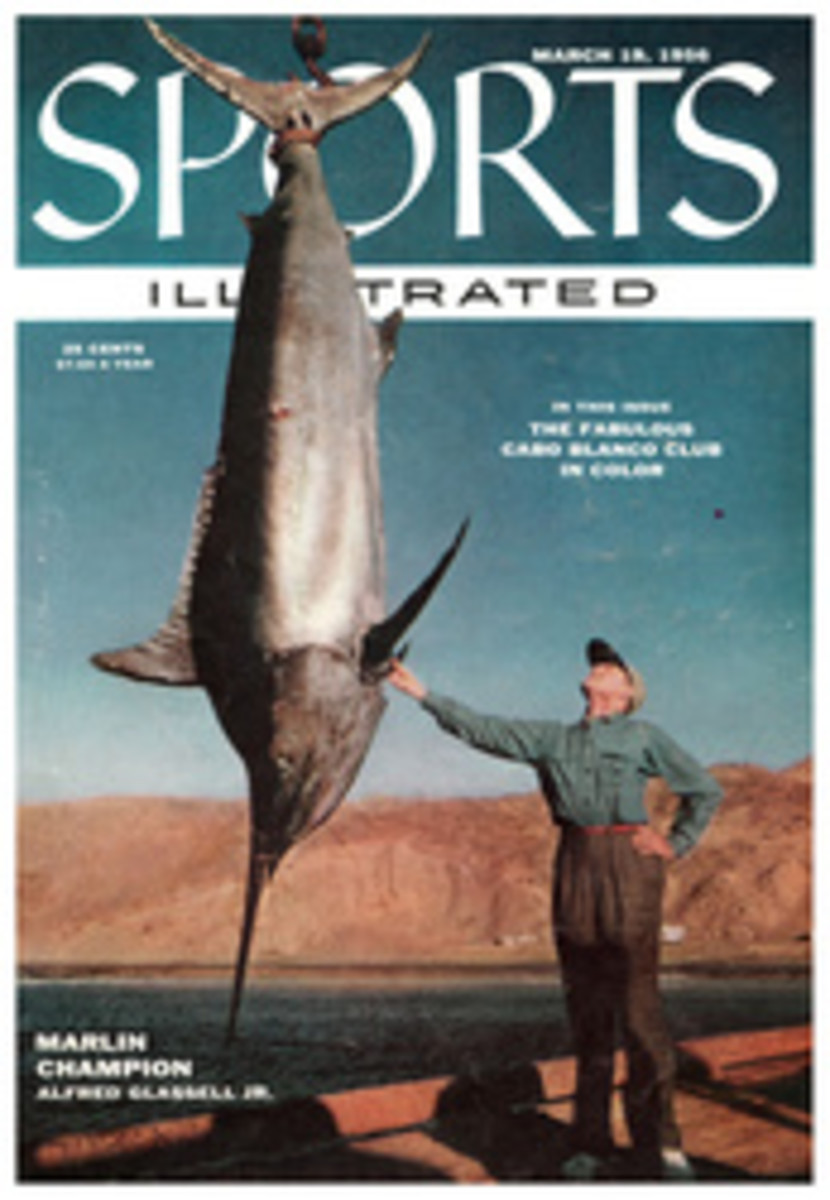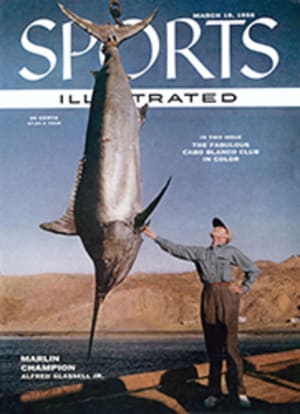
LADIES' GLORY
For some mysterious reason which no one has been able to fathom, most men who would not be seen dead on a golf course in the company of women accept them contentedly, if not downright eagerly, as partners in bowling. Man's ego rebels at a woman's outdriving him, landing a larger fish or bringing down a buck he missed, yet he usually exhibits genuine delight when a woman outscores him on the alleys. This equality in a sport—the acme of woman suffrage, one might call it—has resulted in the mushrooming popularity of mixed bowling. It has gone far beyond the husband-and-wife and boy-and-girl-out-for-a-night stage. Leagues composed of both men and women now provide some of the keenest competition throughout the country. Women vie with men in sweepstakes for prizes all the way up to $12,000. "Mixed sweeps," featuring man-woman doubles teams, are proving far more popular than contests held exclusively for men.
It is equally true of modern bowling, especially when the professionals roll, that women almost always draw more spectators than the men. Officials of the Bowling Proprietors Association of America, who stage several top-notch championships annually, are the first to acknowledge this—and also to admit they don't know why it should be so. The men roll higher scores. Their uniforms are equally colorful. Their gyrations and body English after releasing the ball are at least as energetic as the women's. Yet it was not until women began competing in the All-Star championships in Chicago seven years ago that that tournament became the nation's Number One drawing card.
Just about every top male bowler in the country is scheduled to roll in the BPAA Doubles Championships April 7 and 8, when George Young and Therman Gibson of Detroit will defend their title in Pittsburgh. Yet it would be surprising if they played before SRO crowds on both days, as the women did February 25 and 26 in Cleveland. In that event, as you may recall, Anita Cantaline, 28-year-old bowling instructress, and Mrs. Elvira Toepfer, 33, Detroit housewife, came from behind to win the title by a scant seven pins. Miss Cantaline, who converted the difficult 3-6-10 spare in the final frame to ensure the victory, became the first woman in history to hold both the U.S. singles and doubles championships. She had won the Ail-Star last December in the same spectacular way, defeating Doris Porter of Los Angeles in the last two frames.
The women's doubles, as Tournament Manager Sylvester Sobanski said, had "everything you'd want to see—fine bowling, a thrilling finish and a couple of beautiful women if you got tired of watching just bowling." The latter might provide a clue to the large male attendance at the matches, but it hardly explains the fact that women comprised at least half the crowd. And the women did most of the shouting as the 31-year-old Columbus twins, Mrs. Elizabeth Miller and Marge Merrick, took a 124-pin lead after 12 games of the 16-game contest, only to lose out by a single toss.
Miss Merrick, current central states titleholder and winner of the Columbus match-game championship four years in a row, was the individual star. She bowled a 198-plus average and she ran up a high game score of 258. Next came Mrs. Helen Duval, a California instructress who, like Miss Cantaline, is on the staff of the Stowe-Woodward Co., manufacturer of the Ebonite ball. Mrs. Duval and Prim Verger, both of the San Francisco area, finished fifth. Third place went to 1955 U.S. Match-game Champion Sylvia Wene and Ann Karrer of Philadelphia, who catapulted through in the last block with 800 and 786 respectively, and fourth to Mrs. LaVerne Carter and Flossie Argent of St. Louis. A record field of 64 teams participated.
If any tournament provides more spectator appeal than the Cleveland show, my guess is that it will be mixed doubles competition. Imagine such teams as Joe Wilman-Marion Ladewig, Bill Lillard-Doris Porter, Lee Jouglard-Sylvia Wene, Ed Lubanski-Anita Cantaline. Add such husband-wife combinations as Don and LaVerne Carter, Steve and Helen Nagy, Steve and Maxine Cruchon and Ken and Marge Kelch. Matches among these contestants would pack the largest establishment in the country. Next year, perhaps they will.
ILLUSTRATION
"I dropped the damn thing!"

